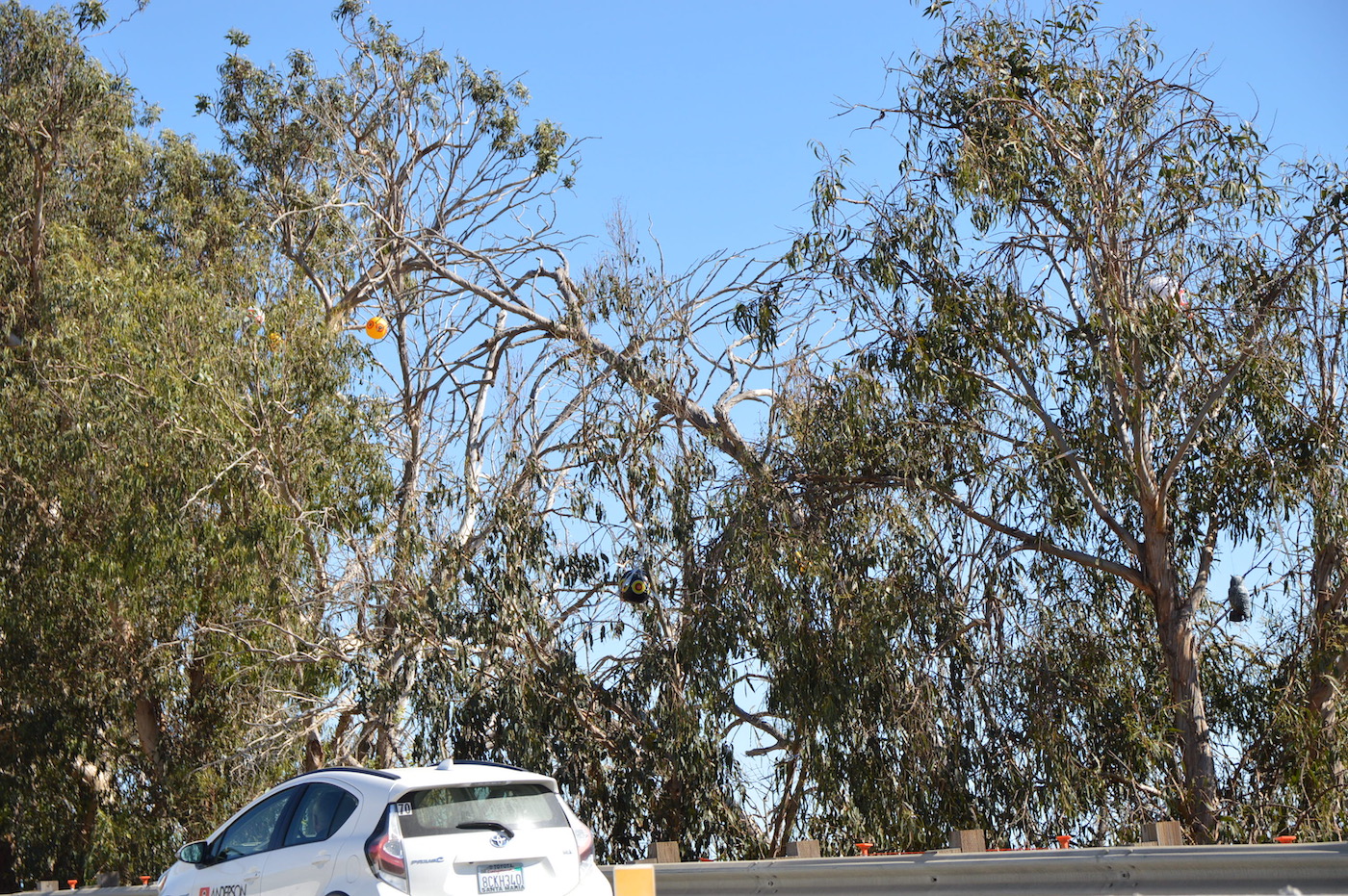Deterring the Birds in Summerland

With ongoing construction on the Sheffield Drive bridge as part of the Highway 101 widening project, many drivers have noticed mylar streamers and balloons in the eucalyptus trees on the nearby bluffs. Both the Audubon Society and Heal the Ocean have received many concerns over what looks like broken mylar balloons in the trees. Kirsten Ayars, Public Information Officer on the freeway widening project, explains that the items are actually part of a strategic bird deterrent and protection plan related to the project.
According to Ayars, double crested cormorants have seasonally nested along southbound Highway 101 near Sheffield Drive since 2011, and biologists have been monitoring the birds and nest counts since 2013. “As part of the highway improvements, a bird deterrent and protection plan was created by state and independent biologists focused on the cormorants. Avoidance and minimization measures were created as part of the 2014 Environmental Impact Report, supplemented with a Natural Environment Study in 2018, and approved by the California Department of Fish and Wildlife,” says Ayars.
The multi-tiered plan starts with monitoring, then removal of old nests outside of nesting season when birds are not present, visual deterrents (such as mylar tape and predator balloons), and auditory deterrents prior to and during nesting season. “The goal is to protect the habitat area in the long term but temporarily encourage birds to find suitable nesting areas outside of the construction zone. This will reduce the potential for construction to impact nesting birds and their young,” Ayars went on to say. Eight different biologists have collaborated on the plan, and the area was established as an Environmentally Sensitive Area, meaning that construction activities within 500 feet of the habitat area are restricted to non-nesting times or require a biologist to be onsite conducting nest monitoring during construction activities.
“If the deterrence measures are not successful and cormorants still nest close to construction activities, additional bird protection measures are enacted. However, these would result in construction delays and longer impacts to everyone, including the birds,” Ayars reported to members of the Audubon Society.
“There is a balance to improving Highway 101 to address freeway congestion, planning for effective and efficient construction, and maintaining habitat areas. Over the next couple of years, this area will be a sub-optimal nesting area for the cormorants. While we are maintaining the existing habitat area, there are many more suitable areas for nesting that will not have construction impacts on birds. If the deterrence measures are not successful, then we will enact larger buffer areas for the birds. The downside is that it would result in an additional year of construction and cost taxpayers up to $10 million in additional costs. This would also mean that the habitat areas would see a longer construction impact than if we all work together from the outset,” said Joe Erwin, Highway 101 Corridor Manager at Caltrans District 5.
The visual deterrents include beach-ball type balloons that are tied with twine to keep them secure in the winds. The trees will not be removed as part of the project, but they have been impacted by the cormorant droppings so there are dead limbs in the area, Ayars reports.
For more information on the highway widening project, visit www.sbroads.com.







